Notes: Sentence Structure & its Types | Basic Grammar for IELTS PDF Download
| Table of contents |

|
| What are Sentence Structures? |

|
| Importance of Sentence Structures in the IELTS exam |

|
| Clauses |

|
| Sentence Structures |

|
| Types of Sentence Structures |

|
What are Sentence Structures?
Sentence structure refers to the way that words are organized into sentences. It includes the order of words, phrases, and clauses within a sentence, as well as the types of words used and their relationship to each other.
Understanding sentence structures is important for effective communication and writing, as it allows writers to convey their ideas clearly and coherently.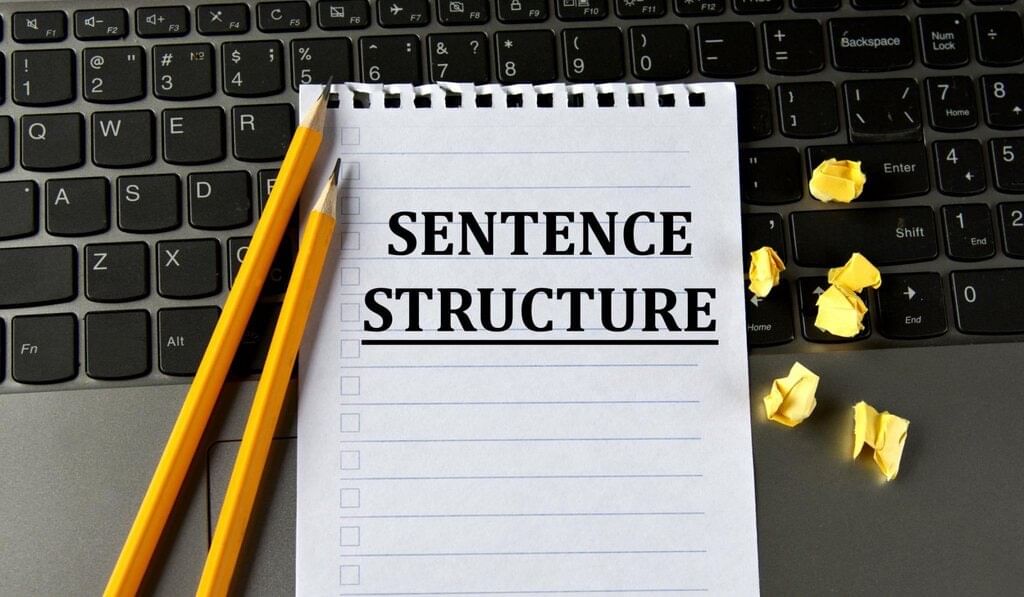
Importance of Sentence Structures in the IELTS exam
- Sentence structures are important for IELTS because they are a crucial component of both the writing and speaking sections of the exam. IELTS test takers are expected to be able to construct grammatically correct sentences that effectively convey their ideas and opinions.
- In the writing section, sentence structures play a vital role in determining the coherence and cohesion of an essay. Using a variety of sentence structures can help to make the essay more engaging and readable, while also demonstrating the test taker's proficiency in the English language.
- Overall, an understanding of sentence structures is essential for IELTS test takers as it enables them to showcase their language skills and effectively communicate their ideas to the examiners.
Before we jump into the fascinating world of sentence structures and their types, let's take a quick detour and explore an essential element that makes our sentences so powerful and versatile - the clause!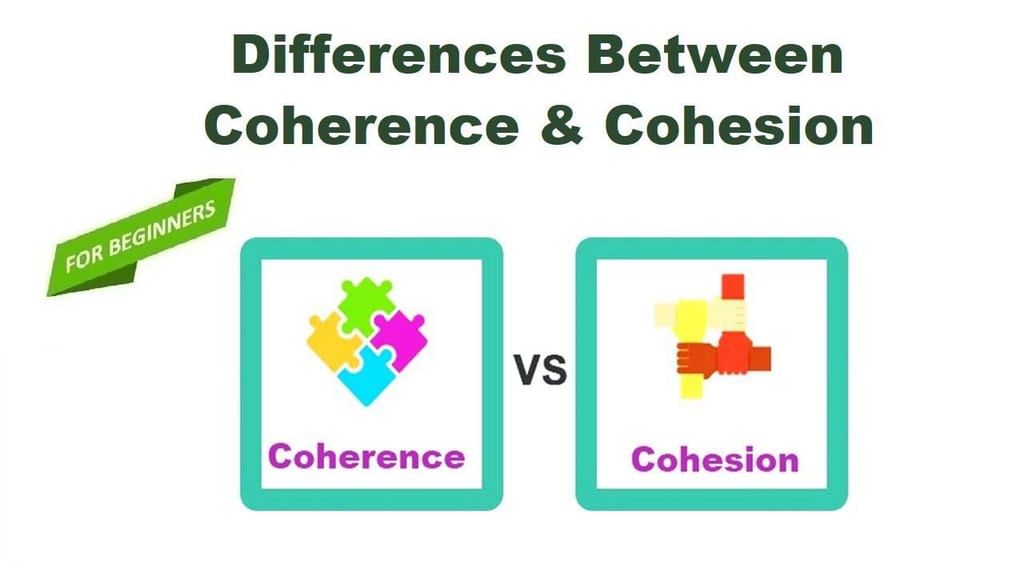
Clauses
Picture this: Clauses are like the building blocks of our sentences. They are the stars of the show, containing a subject and a verb, and they come together to create meaning and expression in our language. There are two types - independent (can stand alone as a sentence) and dependent (needs a buddy to make sense).

Independent Clauses
Independent clauses are easy to understand because they can stand alone and make complete sense.
For example: "The cat sleeps." In this independent clause, "the cat" is the subject, and "sleeps" is the verb. These clauses are like confident individuals who can do things by themselves.
Dependent Clauses
Dependent clauses, on the other hand, need help to make sense. They also have a subject and a verb, but they cannot stand alone as a complete sentence.
For example: "When the clock strikes midnight"
Here, "the clock" is the subject, and "strikes" is the verb. However, something is missing. Dependent clauses are like people who need support to do things.
Now, let's combine them! When you join an independent clause and a dependent clause, you create a complex sentence: "The cat sleeps when the clock strikes midnight." It's like a perfect combination that adds depth and variety to your writing.
Remember: Clauses are the parts of sentences. Independent clauses can be on their own, while dependent clauses need a partner to be complete. Together, they make your writing more interesting and balanced!
Sentence Structures
Now, let's start with the different types of sentence structures. There are six basic sentence structures in English that vary in terms of the order of the subject, verb, and object. These structures are known as SVO, VSO, SV, VO, SVA, SVOI, and SVOO.
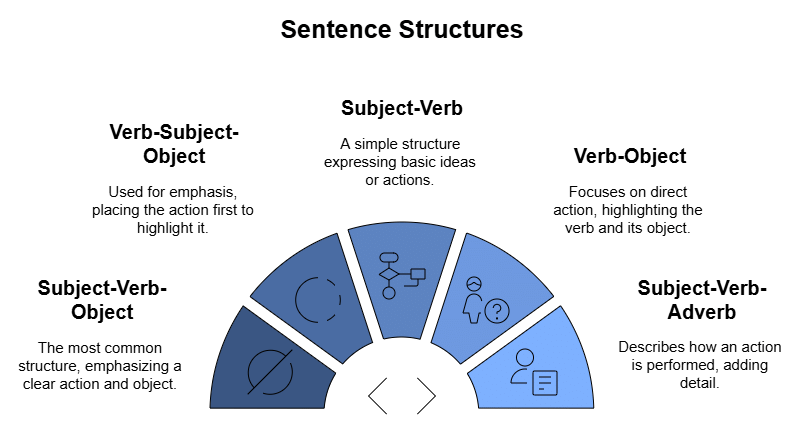
Subject-Verb-Object (SVO): This is the most common sentence structure in English. In this structure, the subject comes first, followed by the verb, and then the object.
Example: "John (subject) ate (verb) an apple (object)."
Verb-Subject-Object (VSO): This sentence structure is used for emphasis and is often found in literature and poetry. Here, the verb comes first, followed by the subject, and then the object.
Example: "Said (verb) the teacher (subject) the rules (object)."
Subject-Verb (SV): This simple sentence structure is used to express a basic idea or action. The subject comes first, followed by the verb.
Example: "I (subject) play (verb) football."
Verb-Object (VO): For a complete sentence, a subject must still be implied or understood. A pure VO sequence without a subject is not a complete independent clause, so the pattern “VO” is better used to describe the predicate part.
Example:
Full sentence: "They (subject) chased (verb) the dog (object)." → Predicate: "chased the dog" = VO
Imperative sentence (subject “you” is implied): "Close (verb) the door (object)."
Subject-Verb-Adverb (SVA): This sentence structure is used to describe how an action is performed. The subject comes first, followed by the verb, and then the adverb.
Example: "He (subject) sings (verb) beautifully (adverb)."
Subject-Verb-Indirect Object-Direct Object (SVOI or SVOO): This sentence structure is used to express an action done to someone or something. The subject comes first, followed by the verb, then the indirect object, and finally the direct object.
Example: "She (subject) gave (verb) him (indirect object) a gift (direct object)."
Remember, a good sentence is grammatically correct and easy to understand. Practice forming different sentence structures to improve your writing and speaking skills.
Types of Sentence Structures
Now, let's dive into the fascinating world of types of sentence structures! There are four main types of sentence structures: simple, compound, complex, and compound-complex. Understanding these will not only improve your writing but also help you ace your IELTS exam. Let's explore each type with examples to make it fun and engaging!
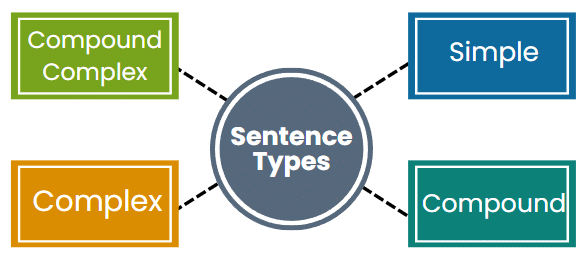
Simple sentences
- These sentences have only one subject and one verb, forming a single independent clause.
- They express a complete thought or idea and are easy to understand. Simple sentences are often used to convey straightforward thoughts, facts, or opinions.
Examples:
Computers are important in the modern world.
Formula = SV
However, it can have more than one subject and verb. Following are some examples of it:
2 Subjects:
Computers and other technological devices 'are' important in the modern world.
Formula = SSV
2 Verbs:
I search for information and play games on my computer.
Formula = SVV
2 subjects and 2 verbs:
My brother and I 'search' for information and 'play' games on our computers.
Formula = SSVV
Compound sentences
- These sentences consist of two independent clauses, each with its own subject and verb.
- Compound sentences allow you to express two related ideas or thoughts in a single sentence.
- In this sentence structure, the clauses are joined with the following coordinating conjunctions:
F = for
A = and
N = nor
B = but
O = or
Y = yet
S = so
The word 'FANBOYS' is an easy way to remember the different conjunctions that make up compound sentences. Obviously, the most common are 'and', 'but', 'or' and 'so'.
Examples:
Computers are important, 'but' they can be dangerous too.
Formula = SV but SV
Computers are important, 'but' they can be dangerous too, 'so' we must be careful.
Formula = SV but SV, so SV.
Avoid writing too many clauses as the sentence may get difficult to follow, and you cannot use each one more than once in a sentence to join clauses.
This is wrong:
Computers are used widely in most countries now, 'and' they are a sign of progress, 'and' we must ensure everyone has access to them.
Incorrect formula = SV and SV and SV.
Two possible corrected versions:
Computers are used widely in most countries now, 'and' they are a sign of progress. We must ensure everyone has access to them.
Formula = SV and SV. SV.
Computers are used widely in most countries now, 'and' they are a sign of progress, 'so' we must ensure everyone has access to them.
Formula = SV and SV, so SV.
Using semicolons
There is an instance when you can have a compound sentence structure without a coordinating conjunction, and this is when you join two clauses with a semicolon(;). It is used when two ideas are related.
Example: Computers are used widely in most countries; they are a sign of progress.
Complex sentences
- These sentences contain one independent clause and at least one dependent clause. Complex sentences help you show relationships between ideas, such as cause and effect, contrast, or condition.
- This type of sentence structure is important for IELTS because to get awarded a band 6 or higher for your 'grammatical range and accuracy', you need to demonstrate that you are able to use it.
- The more varied and the more accurate your complex sentences are, the higher the band score for this.
- A complex sentence has one independent clause and at least one dependent clause, but they are not joined by 'FANBOYS' (coordinating conjunctions). They are joined by subordinating conjunctions.
These are subordinating conjunctions:
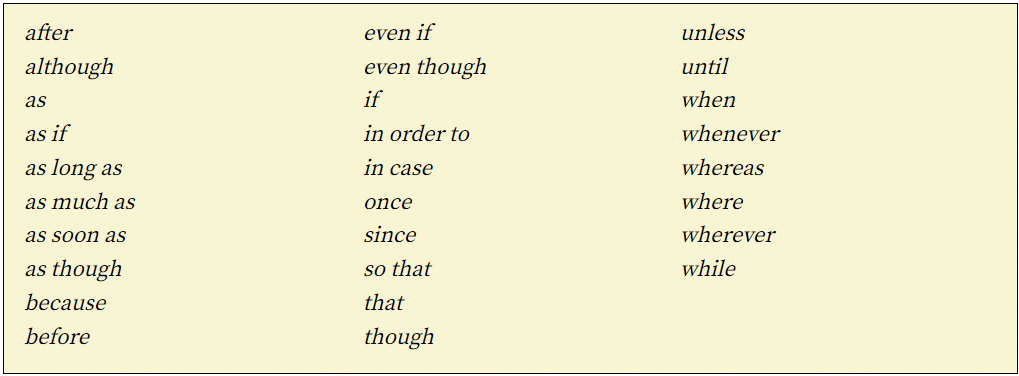
Example:
- People take natural health supplements even though they may not have been tested.
- Our children may not be properly educated if we don't spend more on schools.
- I went to bed as soon as he left because I was tired.
These are all adverbial clauses. Adverbial clauses are a type of dependent clause that function as adverbs in a sentence. They describe when, where, why, how, or under what conditions something happens, and they usually begin with subordinating conjunctions such as because, if, although, when, after, before, since, until, even though, and while.
Unlike noun clauses (which function as subjects or objects) and adjective clauses (which modify nouns), adverbial clauses modify the verb, an adjective, or another adverb in the main clause.
Example: I stayed indoors because it was raining. (The adverbial clause “because it was raining” explains why I stayed indoors.)
Compound-Complex sentences
- These sentences combine the features of both compound and complex sentences. They have at least two independent clauses and at least one dependent clause.
- Compound-complex sentences allow you to express multiple ideas or thoughts while maintaining clear relationships between them.
Example:
I ate a lot 'when' I got home, 'but' I was still hungry.
The part that is in bold is the complex sentence. As you can see, it also has a simple sentence connected to the complex part, creating a compound-complex sentence. It can also have a full compound sentence attached to it, as given in the example below.
I ate a lot 'when' I got home, 'but' I was still hungry, 'so' I went shopping to buy some more food.
Now that you know the four types of sentences, you can mix and match them to create a lively and engaging writing style. Remember, variety is the spice of life (and writing)! Good luck with your IELTS preparation!
|
18 videos|54 docs
|
FAQs on Notes: Sentence Structure & its Types - Basic Grammar for IELTS
| 1. What are the different types of sentence structures? |  |
| 2. Why is understanding sentence structures important for the IELTS exam? |  |
| 3. How can I improve my sentence structure for the IELTS Writing Task? |  |
| 4. What are clauses and how do they relate to sentence structures? |  |
| 5. How many sentences should I use in my IELTS essay for better scores? |  |
















